Sampling design
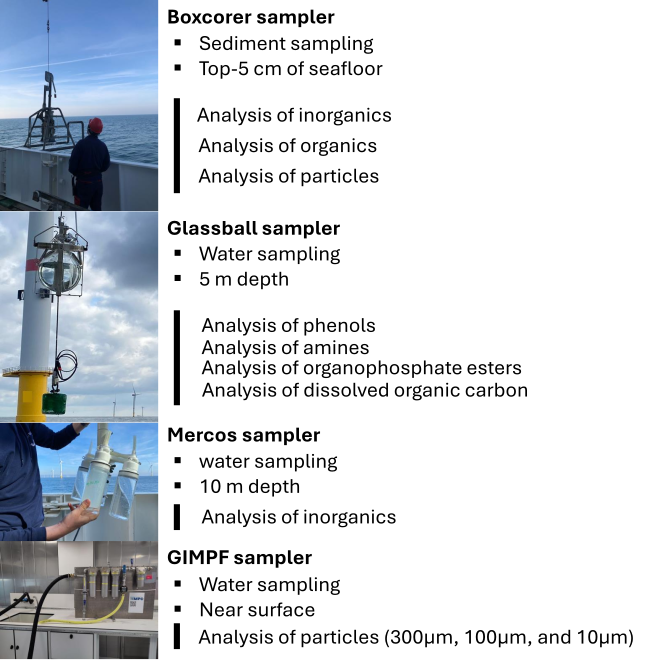
Overview of the sampling design.
To assess the potential impacts of chemical emissions, samples were taken in offshore wind farms (impacts), nearby offshore wind farms, and at reference locations. Impact samples were taken in different offshore wind farms, allowing us to assess different corrosion protection systems as well as different paints. Samples were taken at 150 and 300 m from the turbines from which half the samples were taken in an area where sedimentation was expected. For each offshore wind farm, nearby samples were taken following a gradient towards the offshore wind farm. Due to the high number of activities in the North Sea, different reference areas were selected: an area offshore with low human activity, a nearshore area with high human activity, and close to a shipping lane. In each reference area, at least three samples were taken.
Boxcorer sampler
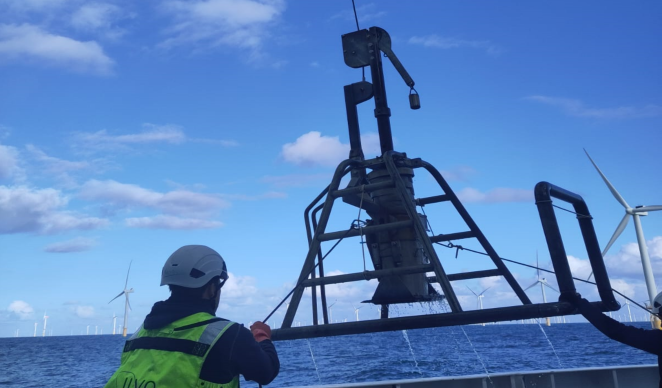
boxcorer sampler
The sediment samples were taken with a boxcorer. This device allows the sampling of sediment without disturbing the verticle profile. This is important, as only the top sediment layer will be analyzed in the Anemoi project. The top layer of the boxcorer will be used to measure:
- Organic pollutants
- Inorganic pollutants
- Particles (microplastics)
- Grainsize
- Total organic carbon
Mercos Water Sampler
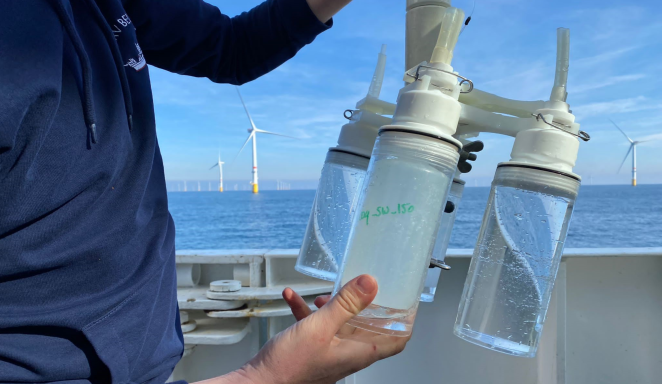
Mercos water sampler after sampling.
Seawater is sampled using a Mercos water sampler. The inlet tubes are closed prior to sampling to avoid seawater entering the sampling bottles. Once the water sampler reaches the desired depth of 10 m, a communicator weight is attached to the cable. This weight will open the inlet tubes when reaching the sampler allowing for the seawater to flow into the bottles. The sampling device (and cable) are completely made out of plastic, making it an ideal sampling device to measure potential metal leachates.
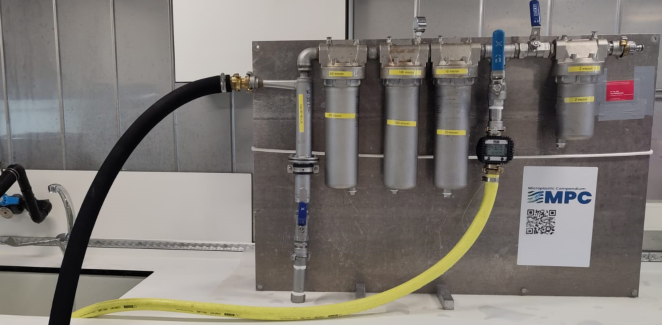
Filtration device
Water filtration sampling device
The water filtration system consists of three filters that are connected in series with a mesh size of:
- 300 µm
- 100 µm
- 10 µm
This device collects and analyzes potential paint flakes and microplastic fragments floating in the water column. At each sampling station, at least 2000 liters of seawater are filtered, and the particles in each filter are collected for analysis.
Glassball Sampler
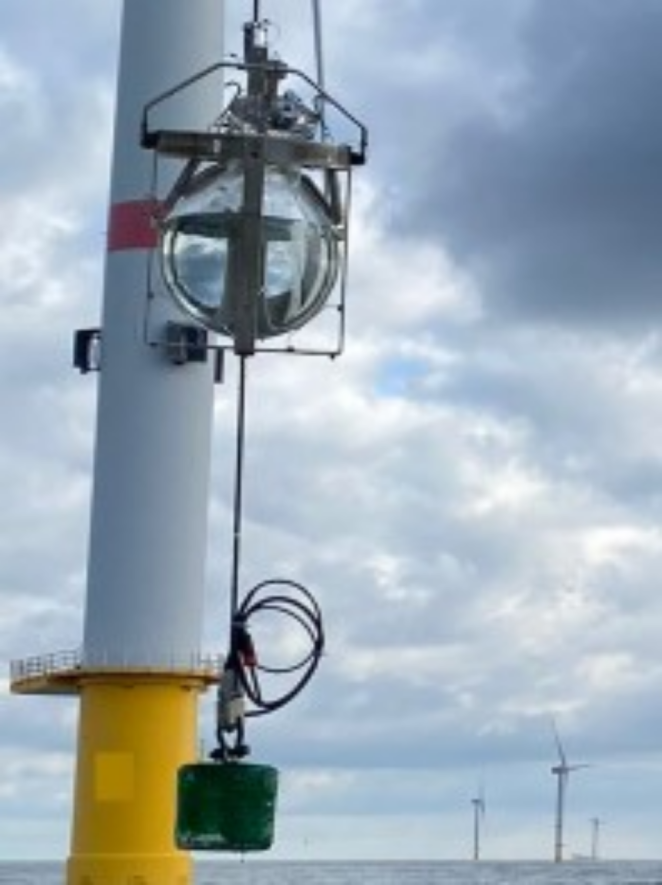
Glassball sampler
The glassball sampler is used to sample seawater at a depth of 5 m. The sampler is completely constituted of glass and stainless steel to avoid potential contamination of plastic and plastic additives. The collected seawater will be used for a targetted screening of:
- Phenols
- Amines
- Organophosphate esters (OPEs)
Targetted analysis of phenols, amines and OPEs

Sample preparation onboard the RV Belgica.
A specific list of phenols, amines, and organophosphate esters (OPEs) is measured in seawater. First, seawater is sampled using a glass ball sampler. Because phenols, amines, and OPEs are often used as plastic additives, plastic (except PTFE) should be avoided, hence the glass/stainless steel sampler device.
Step 1: Filtration
The first step is to remove the insoluble particles. This is done using glass fiber filters. Each filter was baked beforehand to reduce in-lab contamination. After filtration, the filters are stored at -18 degrees Celcius and will be used to determine the amount of insoluble particles at each sampling station.
Step 2: Prepare DOC measurement
The dissolved organic carbon (DOC) can help to understand the measured concentration at a sampling station. To prepare for the DOC measurement, filtered seawater is stored at -18 degrees Celcius till the analysis in the lab. This step is crucial as it ensures the stability of the sample for accurate measurement.
Step 3: Solid phase extraction
Solid phase extraction allows the concentration of chemical components in seawater into a small volume of solvent. The amines and phenols are extracted using an SPE disk, whereas an SPE cartridge is used instead for the OPEs. First, the SPE disk/cartridge is conditioned using a specific sequence of organic solvents. Next, the sample is loaded. Overall, two to three liters of seawater is passed through the SPE. Finally, ultrapure water is added to rinse the disk/cartridge. The chemical compounds in the seawater are now adsorbed on the SPE disk or cartridge. The adsorbed components will remain stable once the SPE is dried (and stored at -18 degrees Celsius). In the lab, the components can be eluded with organic solvents before being analyzed.
Future prospects
Samples collected during both campaigns are currently being analysed. Stay tuned and follow us on LinkedIn to remain informed with the latest Anemoi news!
